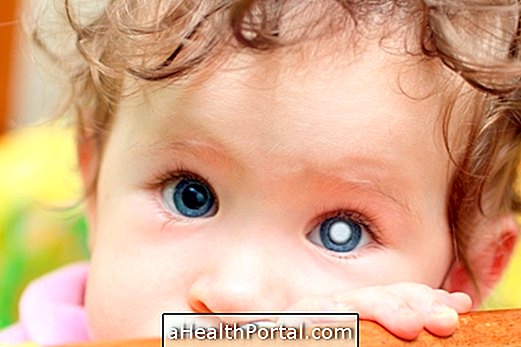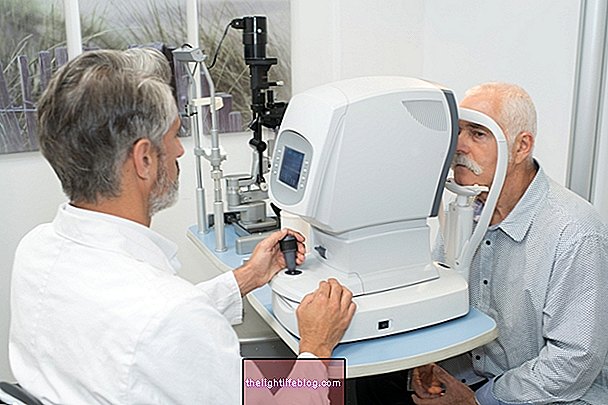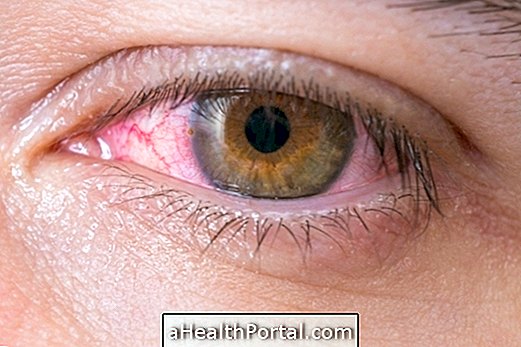Retinoblastoma is a rare type of cancer that occurs in one or both of the baby's eyes, but which, when it is identified early, is easily treated without leaving any sequelae.
That way, all babies should have the eyesight test done right after birth to see if there is any change in the eye that could be a sign of this problem.
Understand how the test is done to identify retinoblastoma.

How to identify
The best way to identify retinoblastoma is to have a blind eye test, which should be done the first week after birth, in the maternity ward, or at the first consultation with your pediatrician.
However, it is also possible to suspect retinoblastoma through symptoms such as:
- White reflection in the center of the eye, especially in flash photos;
- Strabismus in one or both eyes;
- Alteration of eye color;
- Constant redness in the eye;
- Difficulty in seeing, which causes difficulty in grasping nearby objects.
Usually these symptoms appear until the age of five, but it is very common that the problem is identified already during the first year of vid, especially when the problem affects both eyes.
In addition to the prick test, the pediatrician can still order an ultrasound of the eye to aid in the diagnosis of retinoblastoma.
How is the treatment done?
The treatment for retinoblastoma varies according to the degree of cancer development, and in most cases is poorly developed and, therefore, the treatment is done with the use of a small laser to destroy the tumor or application of cold in the local. These two techniques are done with general anesthesia, to prevent the child from experiencing pain or any discomfort.
In the more severe cases, where the cancer has already affected other regions outside the eye, chemotherapy may be needed to try to reduce the tumor before trying other forms of treatment. When this is not possible, surgery may be needed to remove the eye and prevent the cancer from growing and putting the child's life at risk.
After treatment, it is necessary to have regular consultations in the pediatrician to ensure that the problem has been eliminated and there are no cancer cells that can cause the cancer to re-emerge.

How Retinoblastoma Appears
The retina is a part of the eye that develops very rapidly in the early stages of the baby's development, failing to grow thereafter. However, in some cases, it continues to grow and forms a retinoblastoma.
Usually, this overgrowth is caused by a genetic change that can be hereditary, passing from parent to child, but the change can also happen due to a random mutation.
Thus, when either parent had retinoblastoma during childhood, it is important to inform the obstetrician so that the pediatrician becomes more aware of the problem soon after birth to increase the chances of identifying retinoblastoma early.





















